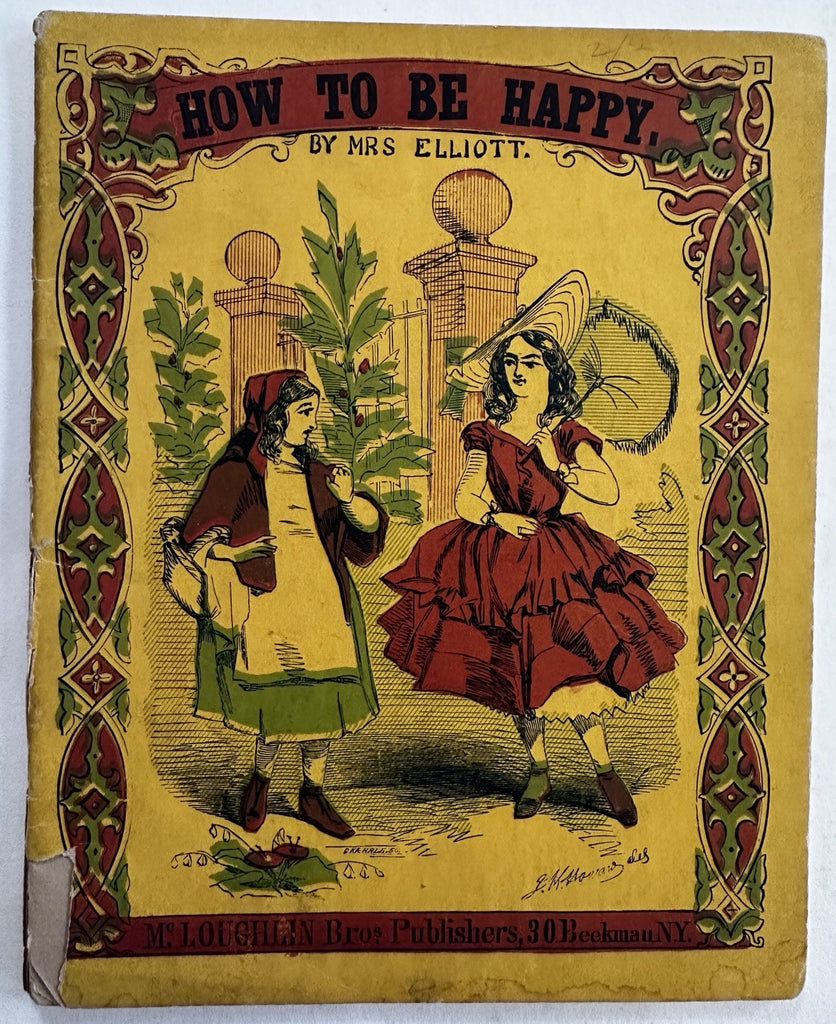How to be Happy Personal Happiness c.1870’s McLoughlin color litho picture book
Brian DiMambro- Antiquarian Books, Maps & Prints








Book is a well age worn and much loved example. How you might expect a book made for children 150 years ago to look.
Published NY, McLoughlin Brothers, 30 Beekman St. c.1865-75. 32 pp. [counting covers], original string tied binding so inherently fragile. Cover art by JM Howard.
Much browsed and handled survival that retains great eye appeal, spine paper splitting as typical, covers and pages loosened, assorted small age soiling, small chip at bottom of spine cover, various signs of time and handling.
Images still mostly clean.
Great philosophical theme for this era, the notion of a person attempting to attain a state of happiness in life.
The survival rate of 19th century paper juvenile books such as this is quite low, a minuscule percentage of those originally produced.
So even if it were “a lot” made then, it would still be very modest by most modern standards of production.
Meaning the actual sales run of hand made books like this would have to be measured in low thousands, thus meaning survival rates probably below 100 -200 per title, with variations of course depending upon factors such as size, title, orig. price, condition, etc.
Therefore, all surviving examples of 19th century hand colored juveniles should be considered inherently scarce and worthy of acquisition on some level, given their actual comparative rarity, which is mostly invisible to the uninformed observer.
Book measures c. 7 1/2“H x 6“W.
B15181
